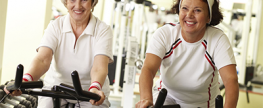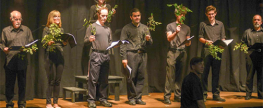
A survivor and his wife offer advice for coping At 71, Bob Seiter was an active guy. After retiring from Kaiser Aluminum, where he worked in sales, he played golf three times a week, playing at a 14 handicap and striving to regain his 4. When he wasn’t on the fairway, he spent a lot of time volunteering. Then one morning, he had a hemorrhagic stroke, and everything changed. His wife, Sue, found him in the garage, alarmingly disoriented, called 911 and prayed. Bob was rushed to the hospital, where he spent three weeks in intensive care, clinging to life. The doctors warned Sue that Bob wasn’t expected to make it. But one day he opened his eyes and awareness began, slowly, to return. Coming Back to a New Life Then came 5 1/2 grueling weeks in a rehab facility. Then came reality. Bob recovered from the acute phase of the brain trauma, but he may never get back to normal. He doesn’t have some of the cognitive capabilities he used to have. He can’t, for example, immediately recall numbers, such as age or quantity. Ask him his own age, and he can’t answer until he first counts 40, 50, 60, 70, 71, 72, 73. His short-term memory is poor. He might forget where the TV remote is, whether he turned off the stove or where the newspaper he’s reading is. (He can’t manage reading a book yet.) He still has trouble to recalling specific words or places, such as the cities where his children and grandchildren live. “I’ve had to recraft myself,” he said. “And that means learning how to do basic things again — and accepting that I’ll never be able to do some things I...









